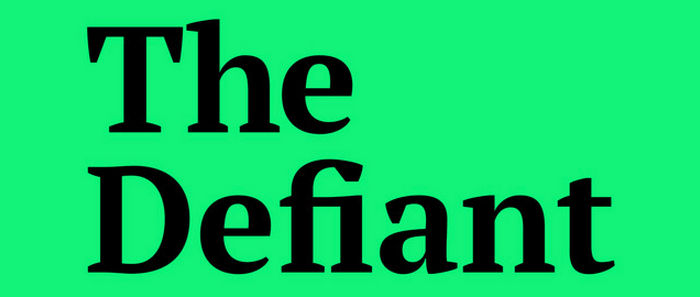Alephium attended Singapore Token 2049 and Maud was interviewed by Defiant news there. She shared a bit about Alephium’s history, the current state and what the future holds. The full video interview is available here:
If you prefer reading, the full (slightly edited) transcript is below.
Hi, Maud! Welcome to Singapore. Can you tell us a bit about your main goals and objectives for coming to Singapore, particularly from this week?
Maud: Thank you very much! This is the first time that Alephium has participated in Token 2049 and come to Singapore. For us, the main goal was to meet some of our partners in person and have ongoing discussions. Meeting people face-to-face helps unlock certain projects and discussions in a digital world. So, it has been a very successful couple of days for us.
Fantastic. You’ve been on several panels and given talks. Can you share some key takeaways from those conversations?
Maud: At the events I attended, many discussions revolved around the industry's fragmentation—fragmentation of liquidity and user experience—and how we can bring things back together. Vitalik’s speech was also a key talking point, where he mentioned that while we’re no longer early to crypto, we are still early to it becoming usable. User experience and developer experience were major topics as well.
Let’s talk about Alephium! Can you tell us a bit about your journey into the crypto world and what ultimately led you to join Alephium?
Maud: I discovered crypto in December 2017 when I joined a Swiss crypto exchange. My introduction was a bit challenging as it was when Bitcoin hit $20,000 for the first time, and the scalability issues with Crypto Kitties on Ethereum were starting to surface. I worked at the exchange for a few years and eventually reconnected with some of the core contributors of Alephium, whom I had worked with previously in another industry. They needed someone who wasn’t a developer to handle non-development tasks, which is what I do now. I joined Alephium in mid-2021, just before the mainnet launch.
What is your current role at Alephium?
I’m essentially the COO, responsible for everything outside of development and marketing. I manage ecosystem development, developer relationships, and all the administrative, legal, and other operational tasks.
How big is the team?
Maud: We intentionally keep the core team small and agile. We have around 15 people, though a few are not full-time, so we have about 10 to 12 full-time equivalents. This lean approach helps us deliver quality work quickly, and it’s also a path to decentralizing the ecosystem in the long term.
For those unfamiliar with Alephium, can you introduce the platform and explain what makes it unique in the blockchain space?
Maud: Alephium was created as an alternative, resilient, and sustainable infrastructure for decentralized applications, smart contracts, and tokens. It’s built on a UTXO model and uses Proof of Work (PoW) but with key innovations. First, our sharded chain allows us to scale to 10,000 transactions per second on layer one, while being a PoW chain. Second, we introduced Proof of Less Work, which reduces energy consumption by up to 87% without compromising security. Lastly, our stateful UTXO model offers the flexibility of smart contracts with the security of the UTXO model, making it easier and more secure to develop on Alephium.
How does Alephium fit within the DeFi space, and what makes it particularly suited for DeFi applications?
Maud: Security and ease of achieving that security are key. The UTXO model provides built-in security for asset management, and since all assets are treated equally at the protocol level, it simplifies development. We’ve also eliminated common issues like reentrancy attacks and the need for pre-approvals, which make DeFi development more straightforward on Alephium.
What has the evolution of DeFi on Alephium been like?
Maud: Alephium supported smart contracts from day one of the mainnet launch, but the ecosystem was less developed at first. Over time, we’ve improved our SDK and virtual machine, leading to our first network upgrade in March 2023. Since then, we’ve seen a significant expansion, with the launch of our first decentralized exchange (DEX) in summer 2023, followed by NFT marketplaces, launchpads, and more. We’ve also built a bridge to Ethereum, allowing major stablecoins like USDT and USDC to be used in our ecosystem, which boosted our total value locked (TVL).
What are some of the most exciting upcoming projects in the Alephium ecosystem?
Maud: We have several exciting projects in the pipeline, including an over-collateralized stablecoin similar to MakerDAO, but with its own unique features. There’s also interest in peer-to-peer protocols for trustless transactions and peer-to-peer lending. We’re also expanding our bridge to other chains, which will open up stable swap development and more.
We’ve heard about ASICs being used in Alephium. Can you explain what they are and their importance to the ecosystem?
Maud: ASICs (Application-Specific Integrated Circuits) are specialized hardware optimized for mining specific algorithms, in our case, the Blake3 algorithm. They significantly increase the hashrate and security of the network and show strong faith from the mining industry in the ecosystem. We’ve had major ASIC manufacturers like Bitmain and Goldshell develop miners for Alephium, which is a great sign of the ecosystem’s growth.
For those new to Alephium, how can they get started on the platform?
Maud: The best place to start is our website, where you can download a wallet — my personal favorites are the desktop and mobile wallets. We’ll soon be supporting hardware wallets like Ledger. There’s also Alph.land, where you can explore the various decentralized applications (dApps) on Alephium. For developers, our open-source docs are a great resource.
If you are interested or have extra questions, you are welcome to reach out on our Discord, or in the Alephium Telegram channel. Don’t forget to follow @alephium on Twitter to stay up-to-date.
